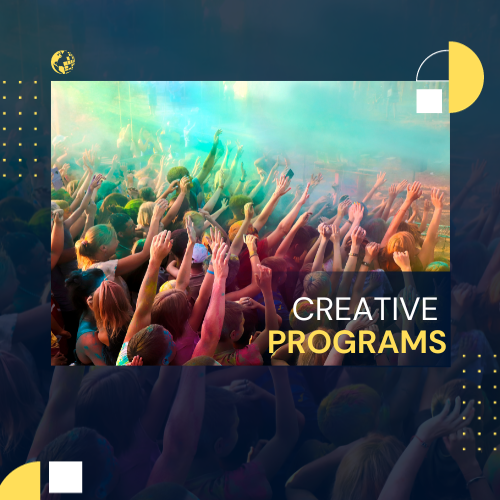Creative Programs
Description
Creating Creative Concepted Video Programs for TV and Social Media
Introduction to Creative Concepted Video Programs
- Creative concepted video programs are a form of content that combines innovative ideas, storytelling, and production to engage audiences. They are designed for telecasting on TV and sharing on social media platforms.
Understanding the Audience
- The first step in creating successful video programs is understanding the target audience. Identifying demographics, preferences, and behaviors helps tailor content to their interests.
Developing Unique Concepts
- Creative concept development involves brainstorming unique and captivating ideas for video programs. These concepts serve as the foundation for engaging content.
Scriptwriting and Storytelling
- Effective scriptwriting and storytelling are essential for engaging viewers. Learning the art of crafting compelling narratives and dialogues is crucial for successful video programs.
Pre-Production Planning
- Planning the production process is vital. This includes scheduling, budgeting, casting, location scouting, and securing necessary equipment and resources.
Production and Filming Techniques
- Mastering filming techniques, including camera work, lighting, sound recording, and directing, is essential for producing high-quality video programs.
Editing and Post-Production
- Post-production involves editing, adding visual effects, sound design, and color correction. This stage enhances the overall quality and appeal of the video program.
Choosing the Right Platforms
- Understanding the strengths and limitations of TV and social media platforms helps in selecting the most suitable channels for telecasting and sharing your video programs.
Marketing and Promotion
- Effectively marketing and promoting video programs is crucial for reaching a wider audience. This includes creating teaser trailers, social media campaigns, and collaborating with influencers.
Audience Engagement Strategies
- Engaging with the audience is key to the success of video programs. Techniques such as interactive content, live Q&A sessions, and community building help build a loyal following.
Measuring Success and Analytics
- Utilizing analytics tools to measure the performance of video programs is essential. Tracking metrics like views, likes, shares, and audience feedback helps in making improvements.
Monetization Strategies
- Exploring monetization options, such as advertising, sponsorships, or subscription models, can turn video programs into revenue-generating assets.
Ethical Considerations and Copyright
- Adhering to ethical guidelines in content creation and respecting copyright laws are essential to maintain a positive reputation and avoid legal issues.
Evolving in a Dynamic Media Landscape
- Staying updated with the latest trends, technologies, and audience preferences is vital for adapting to the ever-changing media landscape.
Conclusion
- Summarizing the key takeaways and emphasizing the importance of creativity, audience engagement, and adaptability in the world of creative concepted video programs for TV and social media.
This learning content provides a comprehensive overview of creating and managing creative video programs for both traditional TV and social media platforms, covering the essential steps, techniques, and strategies for success.
Was this response better or worse?BetterWorseSame
DIGITAL COACH SHAFI
Student Feedback
0.0
Total 0 Ratings

- Course Level Experts
- Lessons 1
- Additional Resource 0
- Last Update October 10, 2023

